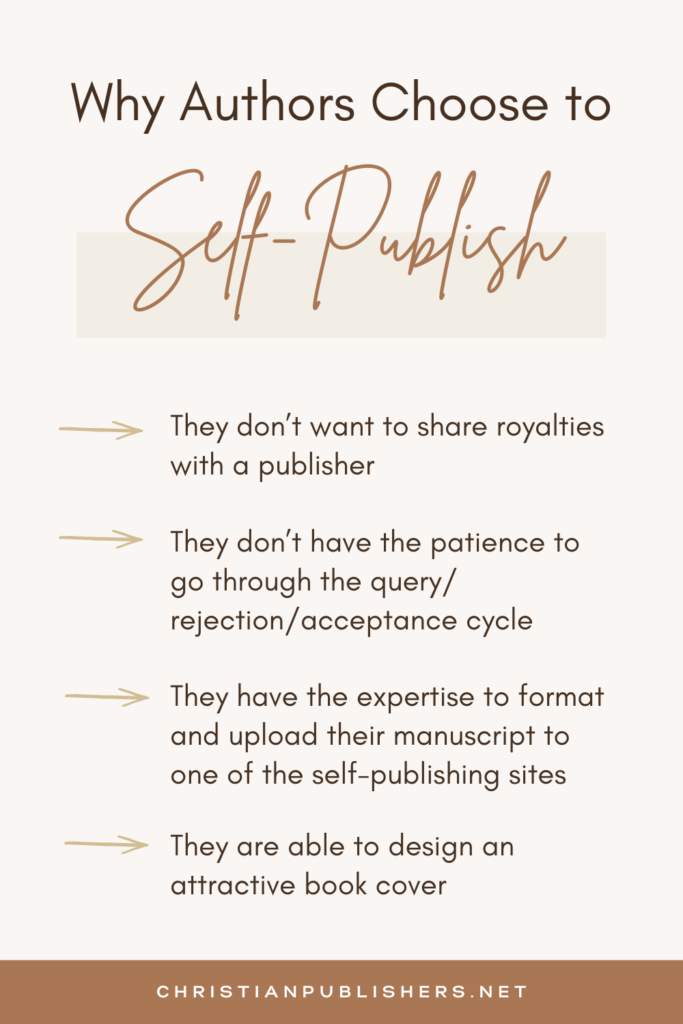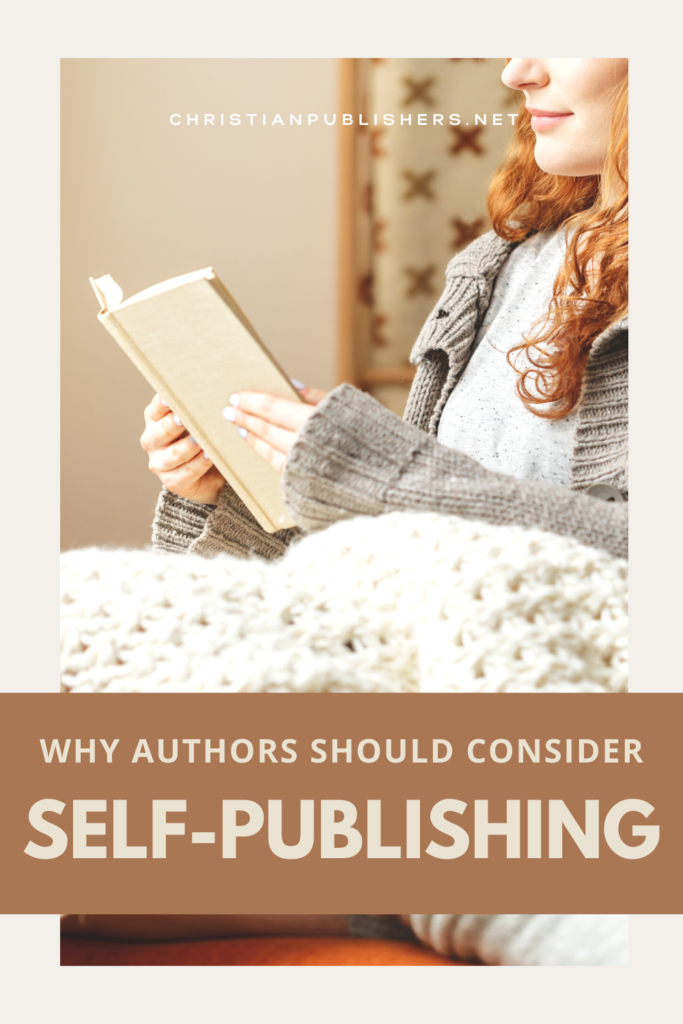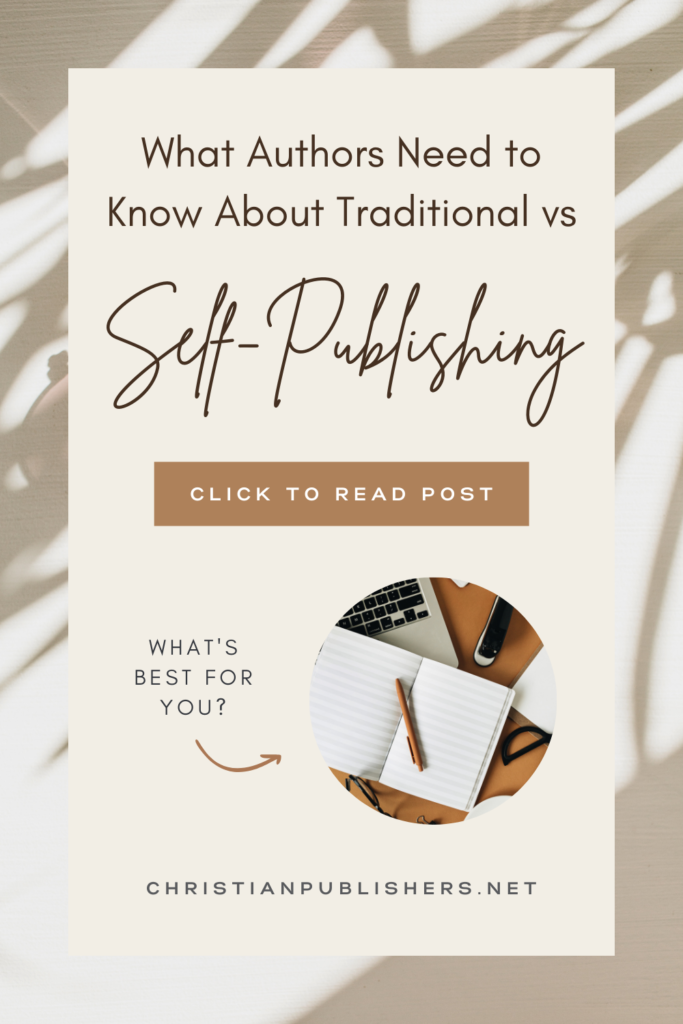
Self-Publishing or Traditional Publishing: Which Is Best for You?
There are many choices these days for a Christian author seeking publication. Sometimes those publishing choices can be overwhelming. In 2009, when I began writing as a hobby, self-publishing was looked down upon by traditionally published authors. They believed only second-rate writers self-published. Many of the indie-published books contained spelling and grammar errors and lacked substantive editing. Today I’m sharing how to choose between self-publishing or traditional publishing.
A few indie-published books stood out as stars among the crowd; The Shack, Still Alice, Peter Rabbit, and Rich Dad, Poor Dad. Some of these sold so well they were picked up by a major publisher and/or made into a movie. Remember the July 2001 Reese Witherspoon movie, Legally Blonde? Who knew it was originally a self-published book!
Twelve years later, many traditionally published authors are hybrid–-they also self-publish, sometimes under a pen name. This enables them to write in more than one genre, which may be frowned upon by an agent or publisher. “Stay in your lane,” we’re told. “Don’t confuse your readers.” This can frustrate writers.
I’ve spoken to Christian authors who have chosen one or more of the following routes to get their work in print. With all the choices available, it’s a great time to be a writer.
Trade Book Publishers
These are traditional publishers who create books you would most likely see in a bookstore.
Book Packagers and Book Developers
The book packager develops an idea for a book (or series of books) and then sells the concept to a publisher. The packager does all of the editorial and production work for the publisher (with publisher approval at key junctures of the process) and generally ships the finished books directly to the publisher’s warehouse.
“Bargain” Book Publishers
These publishers create low-cost books and book-related products (such as calendars or activity kits that include books) for the “bargain” section of the bookstore. The low-cost nonfiction books are usually highly illustrated (souvenir books, craft books).
Textbook and Academic Publishers
Textbook publishers create books for school and university classrooms, usually with a specific course syllabus in mind.
Self-publishing Services
In general, self-publishers, by any name, allow an author to see their book in print or online and be accessible to an audience. However, there are distinct differences between “being published” traditionally and having your book produced by a self-publishing service.
Hybrid Publishing
Hybrid publishers’ services fall somewhere between a self-publishing company and a traditional publisher. Hybrid publishers differ significantly in their terms. Still, they generally offer their authors some level of in-house editorial expertise and distribution support, and they share in the profits that result from the book sales.*
With all the choices, how does an author decide which publishing direction to take?
Self-publishing or Traditional Publishing? Which is best for you?
Self-publishing is a choice many authors make, for many reasons.
- They don’t want to share royalties with a publisher
- They don’t have the patience to go through the query/rejection/acceptance cycle
- They have the expertise to format and upload their manuscript to one of the self-publishing sites
- They are able to design an attractive cover
Hybrid publishers are another choice for an author who needs help formatting their manuscript or designing a cover. They can also help with distribution, but this may cost more than an author is willing to spend.
Personally, I chose Traditional Publishing because I’m basically lazy! I’m good at a lot of things like sending out queries, writing proposals, and letting rejection roll off me. I’m not good at all the skills needed to publish my own work. Nor do I want to learn those skills. I want someone else to do the heavy lifting.
With a traditional publisher, deciding between two or three book covers is less stressful than trying to figure out how to make the font work, how to make my photo choice fit the page, and where to put the title. A built-in editor to fix all my errors is easier than hiring a freelance editor who may or may not understand my message. The publisher will do some promoting for me too, enabling me to piggy-back on their efforts when I go to launch my book.
These are some of my reasons for choosing the traditional publishing route. If you are pre-published, think through these questions as you decide which route to take:
- Do I have the knowledge, or can I learn how to format my manuscript for one of the online book publishing sites?
- Can I create an attractive cover?
- Do I have the money to purchase an ISBN number?
- Can I spend the time to launch my book successfully, resulting in more sales?
- Am I confident in my proofreading capabilities to create a clean manuscript, free of typos?
These are a few of the questions to ask yourself. As authors who are Christians, we want to present our most excellent work. Which choice will enable you to get your book out there?
Post a comment below on how you plan to (or have already) published your book.
For more information on the differences between self-publishing and traditional, check out The Write Conversation blog.
About the Author
Jane Daly is a speaker and author currently living in the Pacific Northwest. When she’s not working in the banking industry, Jane is preparing to transition to full-time RV living. She writes both fiction and nonfiction and is currently working on her fourth novel. Her newest release is The Girl in the Cardboard Box. You can find Jane at www.JaneSdaly.com
According to Thomas Umstattd, Jr., authors who self-publish typically sell about 200 copies, unless they know how to successfully launch and market their books. https://www.thomasumstattd.com
*Source: TheBalanceCareers.com Types of Book Publishers Article #2799865




